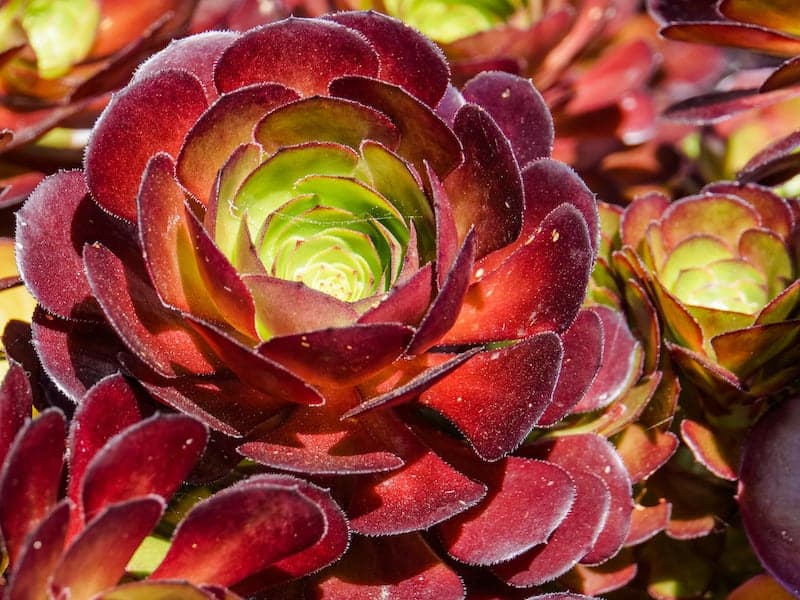
Crassula platyphylla is otherwise known as ‘burgundy’ or crassula ‘burgundy’. It is part of the Crassulaceae family and Crassuloideae subfamily. It is a very popular succulent amongst succulent growers due to its colorful appearance when under stress.
If you want to learn everything there is to know about crassula platyphylla then you have come to the right place. This article covers everything there is to know about this attractive succulent, from propagation to hybrids, and more. Enjoy!
Jump to:
Description
| Name: | Crassula platyphylla |
| Soil: | Well-drained cactus potting soil |
| Blooming: | Spring to mid Summer |
| Light: | Full sun to partial shade |
| Water: | When the soil is completely dry |
| Propagation: | Leaf cuttings and seeds |
The crassula platyphylla has thick green leaves that turn red or burgundy when exposed to cool and stressful conditions. This succulent grows much like a shrub, and due to its easy-going nature, it has become a very popular houseplant to grow all over the world.
Cultivars and Hybrids
The crassula nudicaulis var. Platyphylla is a very popular cultivar. Like all succulent plants, the crassula platyphylla can be used to create unique and interesting hybrid species of succulents.
Care
Caring for crassula platyphylla is very easy. Keeping this plant indoors is the best way to ensure it thrives unless you live in USA hardiness zones 9b to 11b. The key is to ensure that your plant is not exposed to temperatures cooler than 25 degrees Fahrenheit or minus 3.9 degrees Celsius. Follow the advice in the sections below to keep your crassula platyphylla in tip-top condition.
Light
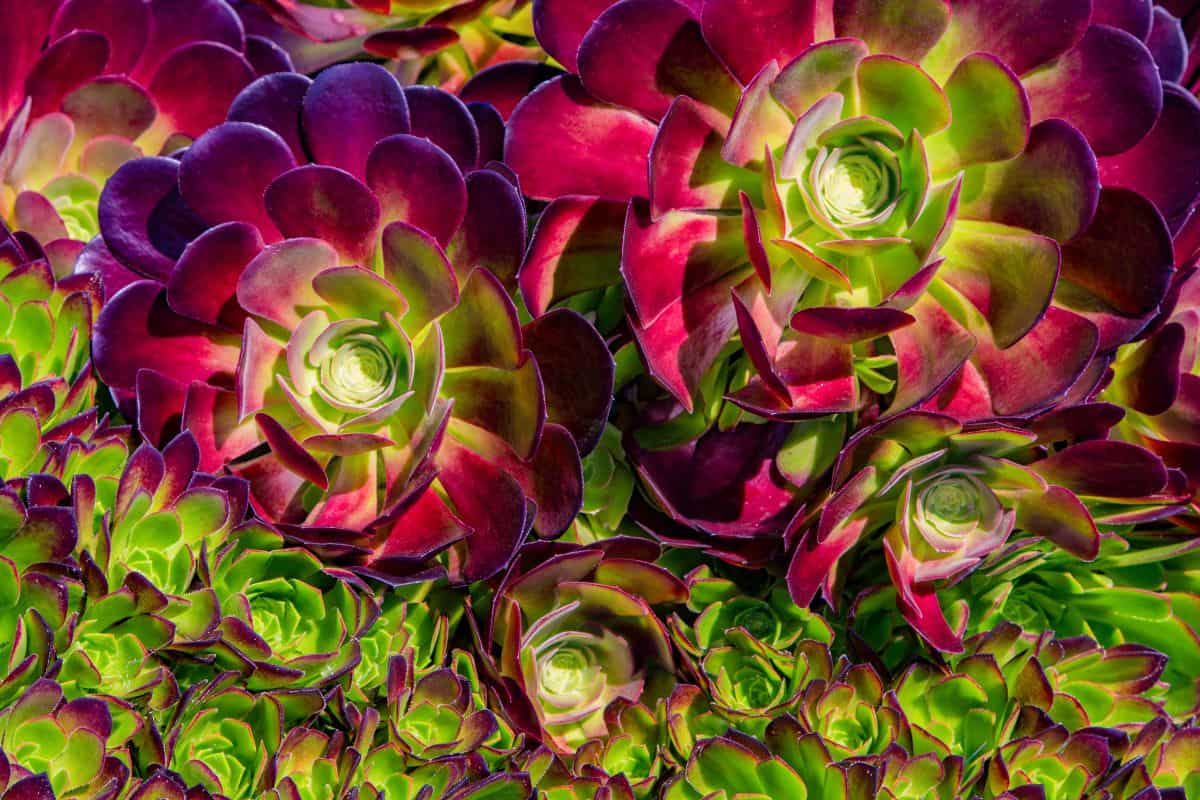
Buy it from:
Sun, sun, and more sun is what the crassula platyphylla loves the most. Keeping this succulent in full sun to partial shade will keep your plant happy. Make sure they get about six hours of sunlight every day, so where you place the plant in your garden or home is vital.
If you want to grow the crassula platyphylla as a house plant, keep it on a windowsill that gets a lot of natural sunlight. You can always move the plant around the house if you feel like it isn’t getting enough sun. Garden succulents should be planted in tubs and moved around the garden so that they are always in direct sunlight.
Water
There are two popular watering methods for succulents. The first is to water your succulent at the base of the plant, and the second is to place water on the tray at the bottom of the pot so that the water soaks upwards.
No products found.
Here is a quick succulent watering guide for both techniques:
- If you want to water your plant by soaking the soil at the base of the plant, then make sure you do not water the plant from over-head. Over-head watering can spread diseases and infections from unhealthy leaves to healthy leaves which becomes very hard to control.
- Check the soil daily for moisture, if the soil is still damp, you should not re-water the plant.
- Keep note of when you last watered your succulent.
Guide to watering your plant from the bottom up:
- Pour water onto the tray or plate underneath the pot.
- Leave the water on the plate for three or four minutes.
- Once you have given the plant a few minutes to soak up the water, pour the excess water from the plate away.
- Check the soil daily for moisture, if the soil is still damp, you should not re-water the plant.
- Keep note of when you last watered your succulent.
Temperature
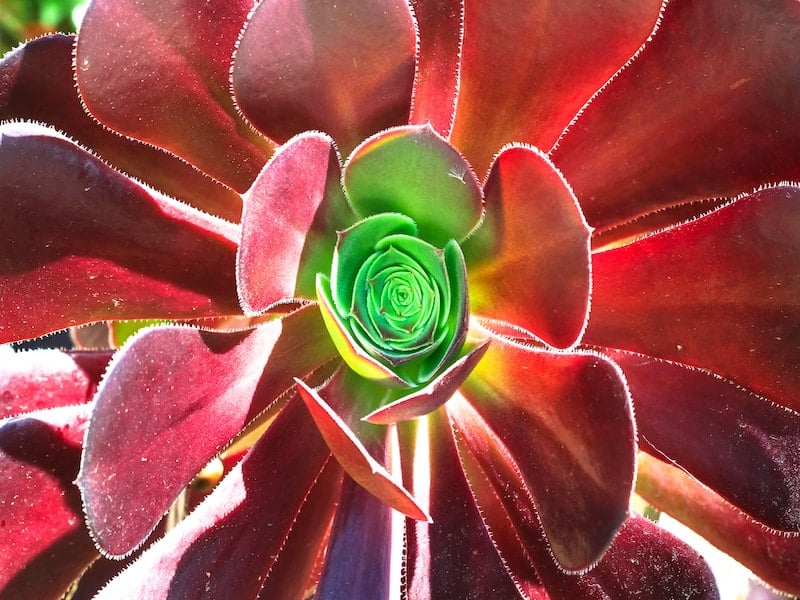
The crassula platyphylla succulent is not a cold-hardy plant. Although it can grow in below-freezing temperatures, it will not live for very long in these conditions.
Do not be fooled by these succulents’ sun-worshiping traits. They can get sunburnt if the weather is too hot, so you should make appropriate shade using shade cloths or companion plants to protect your succulent from extreme heat.
Another thing you should be careful of is humidity. If your crassula platyphylla is growing outside in a very humid climate, it may become soft and soggy, and deteriorate quickly. Anyone living in an area that does not display weather conditions similar to the conditions in USA hardiness zones 9b to 11b should grow their succulent indoors.
Plants that are growing in the garden are a little harder to care for as weather fluctuations are uncontrollable. To stop your succulent from being exposed to weather conditions that are less than ideal when it is growing in the garden, plant your crassula platyphylla in tubs or pots that can be moved inside during heavy rain or frost.
Soil
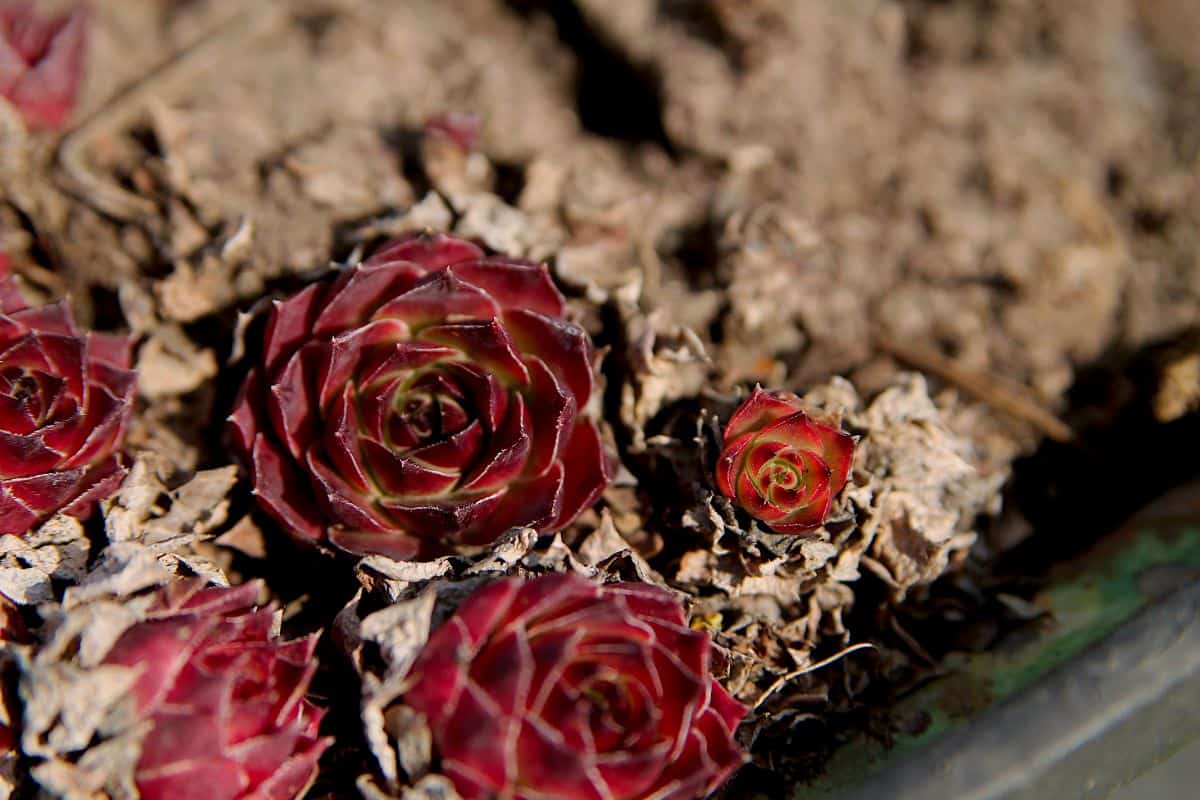
Plant your succulent in well-drained cactus potting soil. You can also place soil toppers such as pebbles or rocks on the soil to help with drainage.
Do not use pre-fertilized soil or store-bought potting soil for your crassula platyphylla plant. Nutrient-rich soil is not ideal for succulents or cacti. You should always re-pot your plant in the soil of your choice as soon as you buy them. This is to ensure it is growing in the best type of soil for the plant.
Propagation
Succulents are very easy to propagate. The crassula platyphylla plant should be propagated using leaf cuttings or from offsets. Take a look at the sections below for details and instructions.
Seeds
Propagating crassula platyphylla from seeds is the hardest way to grow new plants, so we recommend giving this a go if you are patient and experienced. Here is a step by step guide to growing crassula platyphylla from seedlings:
- Sow the seeds in the summer or late spring.
- Do not keep the seeds in temperatures above 21 degrees Celsius or 70 degrees Fahrenheit.
- Do not cover the seeds with a top layer, and do not keep them in direct sunlight.
- Germination takes up to three weeks.
- Transplant the seeds once you see that three or more leaves have grown.
Cuttings
If you wish to propagate your plant from cuttings, you should remove a healthy leaf from the main plant using a sterile sharp knife. Once you are confident that all of the leaves have been removed from the main stem, place it on well-drained soil and water it when the soil is dry.
Offsets
Propagating the crassula platyphylla from offsets is the easiest way to propagate your plant. There are two ways to propagate your crassula platyphylla from offsets, here is a step by step guide for both techniques:
Cutting the Offset
- Look for a healthy and well-established offset at the base of the parent plant.
- Using a sharp, sterile knife or scissors remove the offset from the main plant.
- Leave the offset to dry out for a few days before planting in well-drained soil.
Up-rooting the Offset
- Brush away the top layers of soil until you can see the roots of the plant.
- Using a sharp knife, or using your hands if possible, remove the offset and its roots from the main plant.
- Leave the offset to dry out for a few days before planting in well-drained soil.
Note: This technique isn’t always possible as sometimes the roots of the offset are not visible or obvious.
Common Pests and Problems
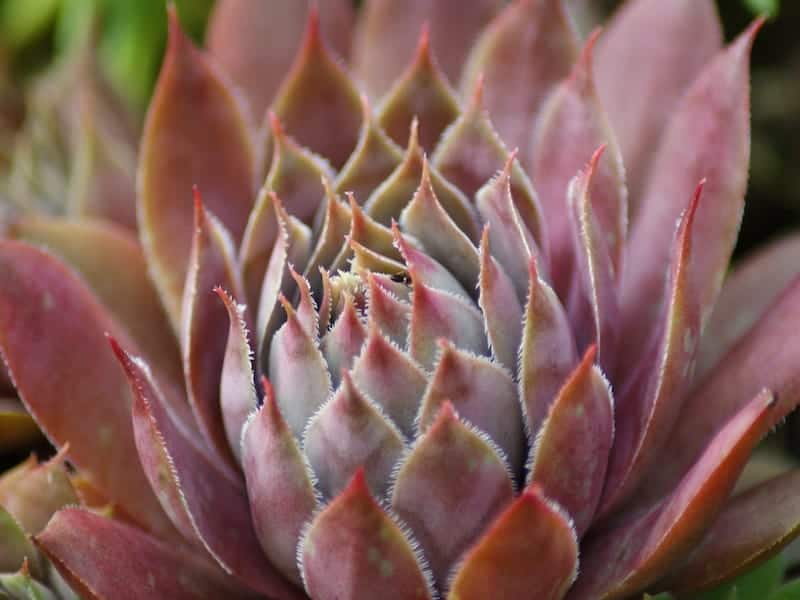
Look out for mealybugs and fungal diseases. The crassula platyphylla is prone to root rot and powdery mildew as a result of overwatering or being potted in the wrong type of soil for its plant type.
Diseases and pests are very easy to control if they are spotted in time, so you should check your succulent daily for signs of pests or infections and act fast. Succulents growing indoors are less prone to insect infestations than succulents growing in your garden or balcony.
Sources:
https://extension.umn.edu/houseplants/cacti-and-succulents#indoors-vs.-outdoors-1421914
https://www.canr.msu.edu/news/secrets_to_success_when_propagating_succulent_plants


